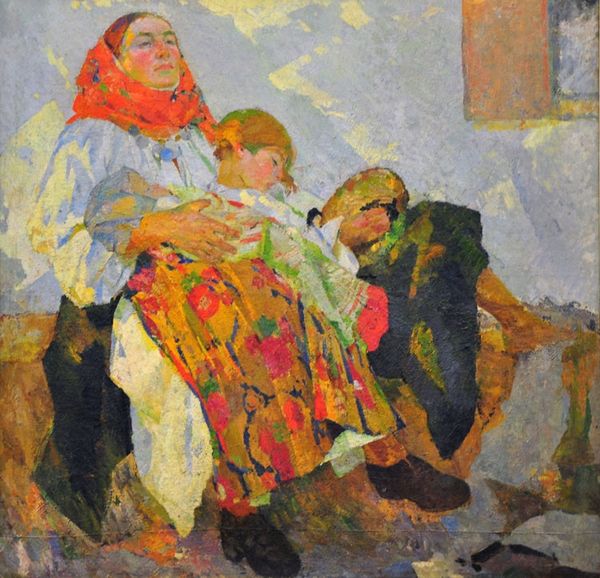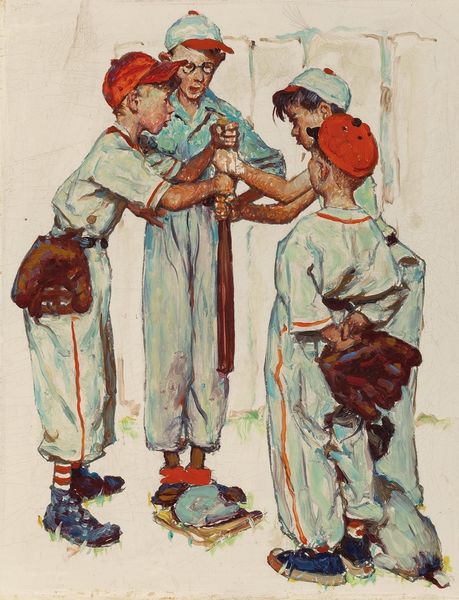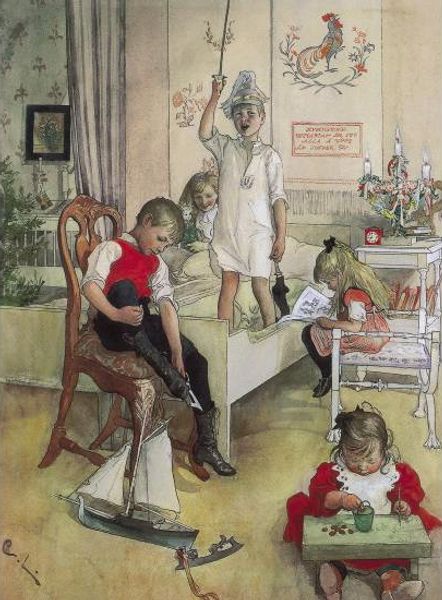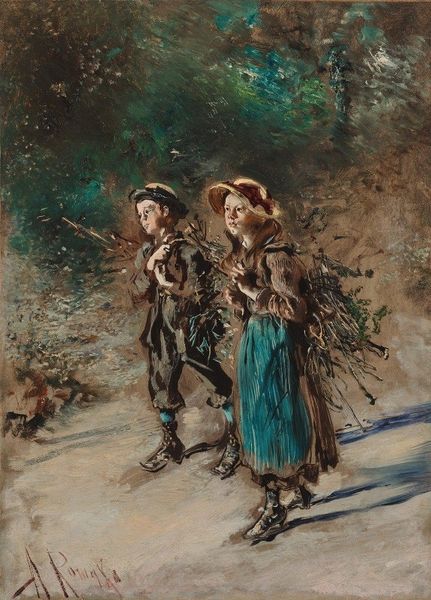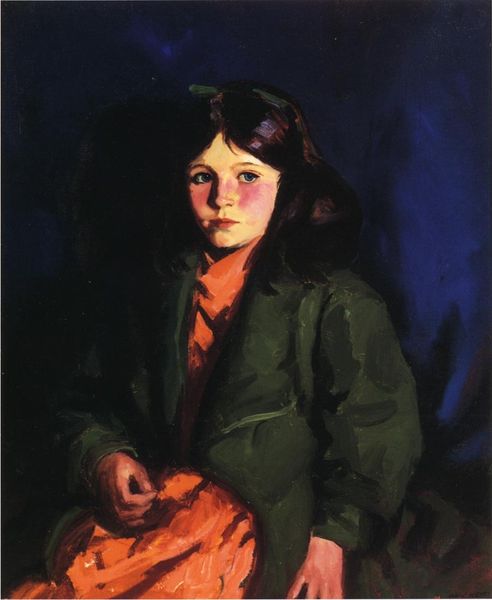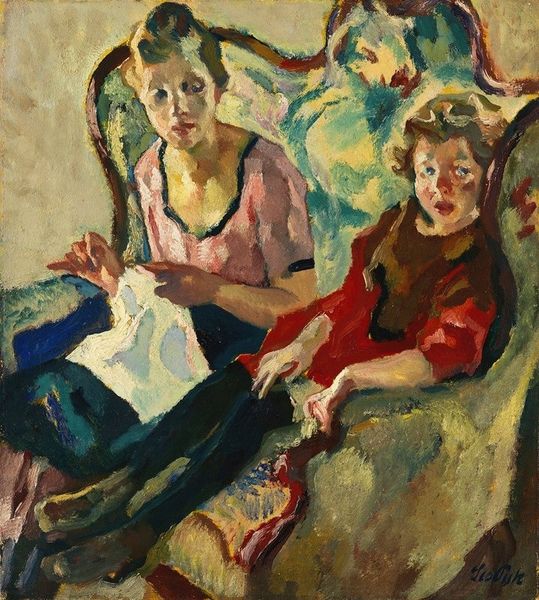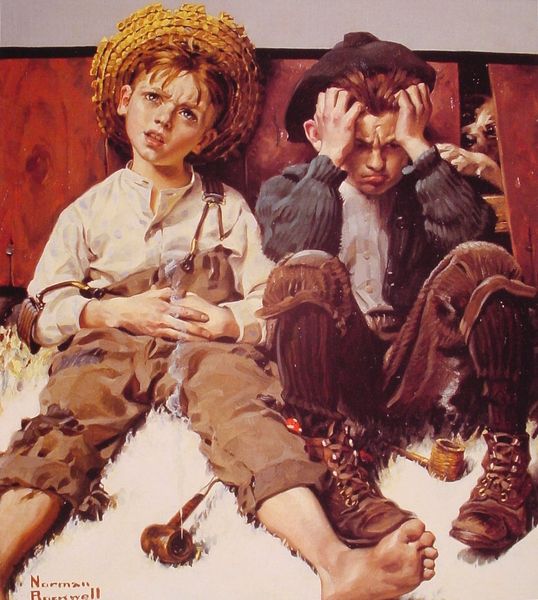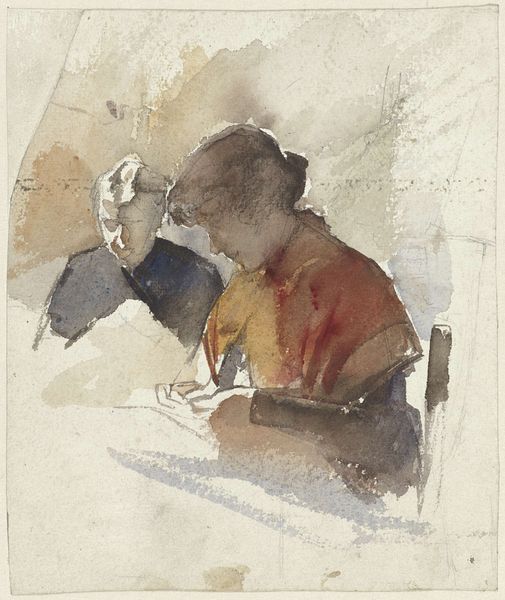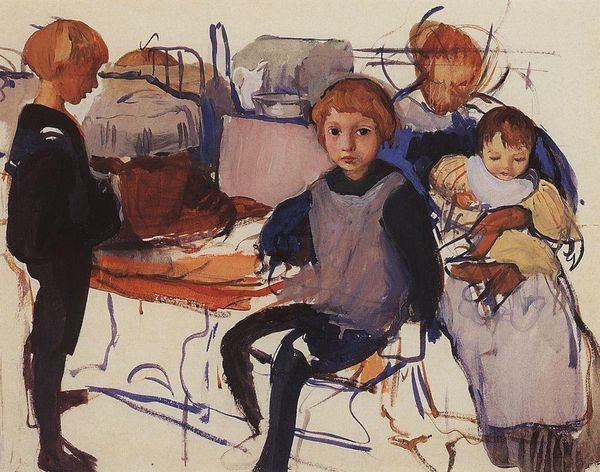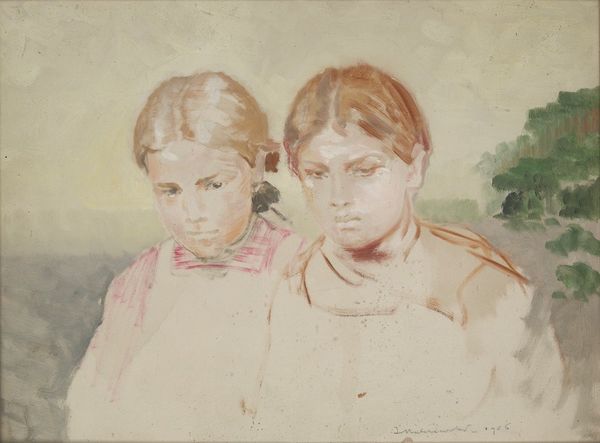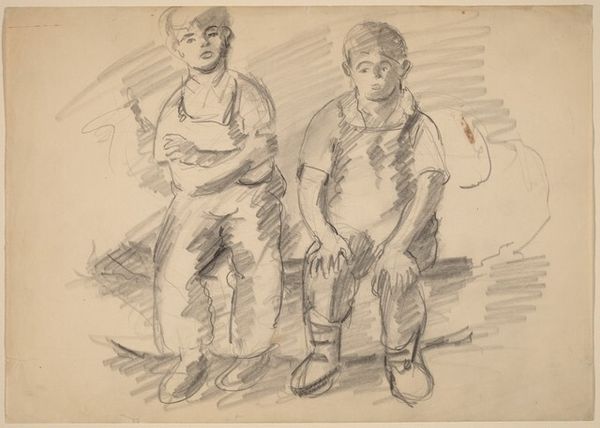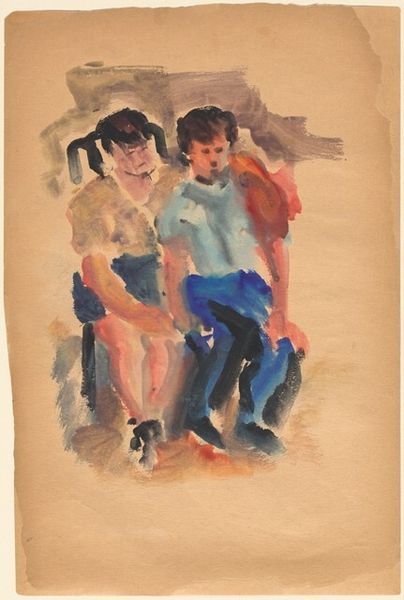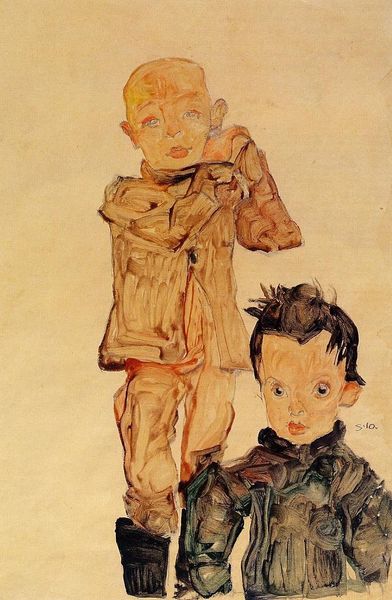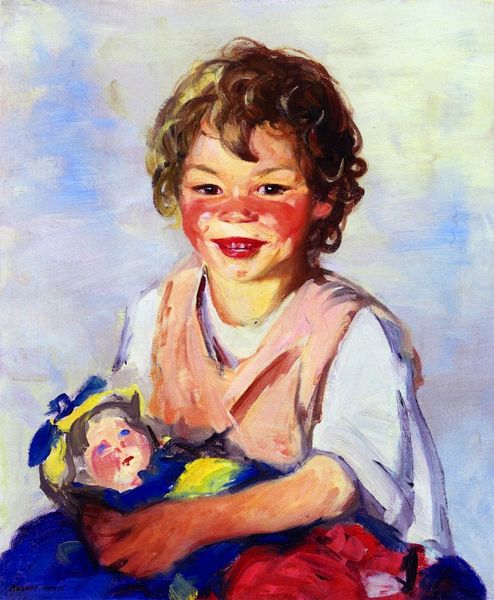
#
possibly oil pastel
#
oil painting
#
acrylic on canvas
#
underpainting
#
painting painterly
#
animal drawing portrait
#
portrait drawing
#
portrait art
#
watercolor
#
fine art portrait
Copyright: Modern Artists: Artvee
Curator: Let’s take a closer look at Norman Rockwell’s "Study for 'Tom Sawyer,'" painted around 1936. Editor: There’s such a warmth here, even with the melancholic figure tucked away in the corner. It feels very…human. Curator: Rockwell's work is fascinating in its construction of an American mythos, wouldn't you agree? It served a specific social function, defining middle-class values for decades. In the 30s especially, with economic troubles everywhere, an idealized, nostalgic view of childhood resonated strongly. Editor: Absolutely, but look at the composition itself! These are classic archetypes: the mischievous trickster with his pipe, the ashamed one hiding his face, almost childlike in its directness. Consider how prevalent this trio is, not only in Western folklore, but globally. The "hear no evil, see no evil, speak no evil" dynamic comes to mind. Curator: Indeed! And he presented it through accessible imagery which aided the war effort, for example. Consider this in relation to its cultural purpose of reinforcing positive sentiments during wartime: it's a potent combination. It depicts three separate facets of childhood experiences. Editor: I can see that in this study. Rockwell distilled complex emotional states down to readily understandable visual symbols: the exposed toes, the guilty hands covering a face… it all speaks volumes about this phase of youthful life, even cross-culturally. Curator: The fact Rockwell undertook preliminary sketches for his grander narratives like 'Tom Sawyer' speaks to his meticulous approach and to the weight he placed on those visual symbols. The Saturday Evening Post covers of his works, helped to solidify these archetypes into the collective American consciousness. Editor: Yes, his studies often feel even more emotionally raw than the finished pieces, somehow. There’s something very appealing about witnessing this initial exploration of those emotional touchstones that defined America at the time. It speaks to Rockwell's success as more than simply an artist, but a social figure in his time. Curator: A figure shaping and reflecting his own cultural and temporal landscape, without doubt. Editor: Rockwell offers us not only the immediate allure, but also the lasting echoes of iconic symbolism that speak to the deeper shared experiences that persist today.
Comments
No comments
Be the first to comment and join the conversation on the ultimate creative platform.
